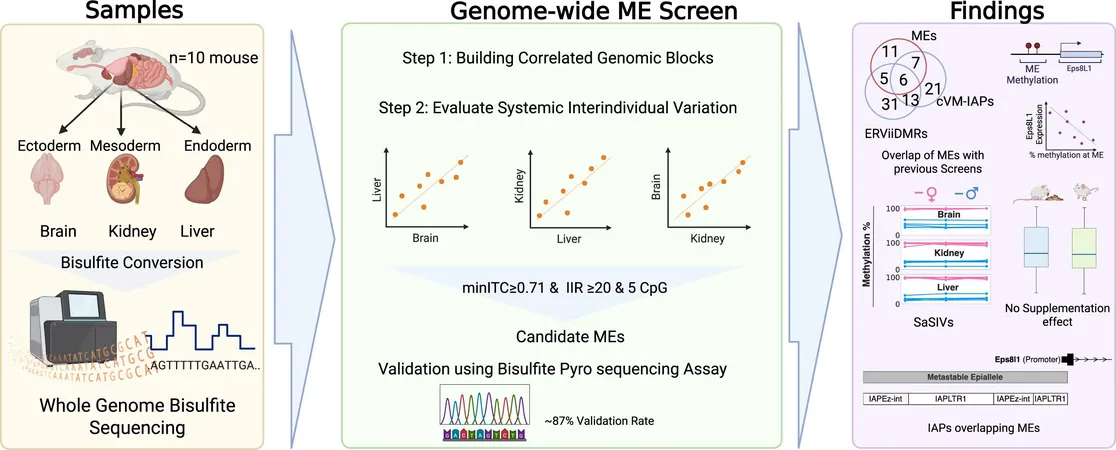
Revolutionary Discovery: Scientists Shed Light on 20-Year Epigenetic Enigma!
2025-07-24
Author: Mei
The Curious Case of the Avy Mice
In a fascinating twist of science, researchers have delved into the genetic quirks of the "agouti viable yellow" (Avy) mice, where some appear lean and brown, while others are yellow and obese. This striking disparity stems from the intricate world of epigenetics, where molecular tags, notably methyl groups, alter DNA to dictate how genes are expressed across different cell types.
A Breakthrough Study from 2003
A groundbreaking study in 2003 unveiled that simply enriching the diets of pregnant female mice with methyl donor nutrients made a remarkable difference—more lean, brown Avy offspring emerged! This phenomenon raised eyebrows, suggesting that such 'metastable epialleles' might be widespread in mouse genetics.
The 20-Year Wait for Answers
Despite research interest, the precise number of metastable epialleles in mice remained shrouded in mystery for over two decades—until now! Enter Dr. Robert A. Waterland and his team from the Baylor College of Medicine, who recently published research in Nucleic Acids Research that reveals these elusive epialleles are actually quite rare.
Peeking into the Genome
The research team launched a meticulous examination of epigenetic variation throughout the mouse genome, focusing on DNA methylation in the liver, kidney, and brain of ten genetically identical mice. Astonishingly, they uncovered a mere 29 metastable epialleles among millions of potential sites.
Surprising Dietary Revelations
One of the study's eye-opening conclusions was that maternal nutrition—specifically, supplements like folate and vitamin B12—had no impact on these newly discovered epialleles. This sharply contrasts with the findings from earlier studies involving the Avy mice, where such nutrient supplementation significantly influenced methylation levels.
A Broader Impact on Human Health
Dr. Waterland emphasized that their findings spurred investigations into human epigenetics, leading to the identification of thousands of human regions known as CoRSIVs (correlated regions of systemic interindividual epigenetic variation). While these regions are heavily influenced by genetic factors rather than being true metastable epialleles, they play a critical role in human disease.
An Epigenetic Puzzle Unraveled
With over 10,000 human CoRSIVs identified compared to only 29 metastable epialleles in mice, this research not only highlights the complexity of epigenetic variation but also underscores the significance of genetic components in shaping these variations. The study marks a pivotal step in uncovering the mysteries of epigenetics, potentially reshaping our understanding of genetics in both mice and humans.







 Brasil (PT)
Brasil (PT)
 Canada (EN)
Canada (EN)
 Chile (ES)
Chile (ES)
 Česko (CS)
Česko (CS)
 대한민국 (KO)
대한민국 (KO)
 España (ES)
España (ES)
 France (FR)
France (FR)
 Hong Kong (EN)
Hong Kong (EN)
 Italia (IT)
Italia (IT)
 日本 (JA)
日本 (JA)
 Magyarország (HU)
Magyarország (HU)
 Norge (NO)
Norge (NO)
 Polska (PL)
Polska (PL)
 Schweiz (DE)
Schweiz (DE)
 Singapore (EN)
Singapore (EN)
 Sverige (SV)
Sverige (SV)
 Suomi (FI)
Suomi (FI)
 Türkiye (TR)
Türkiye (TR)
 الإمارات العربية المتحدة (AR)
الإمارات العربية المتحدة (AR)